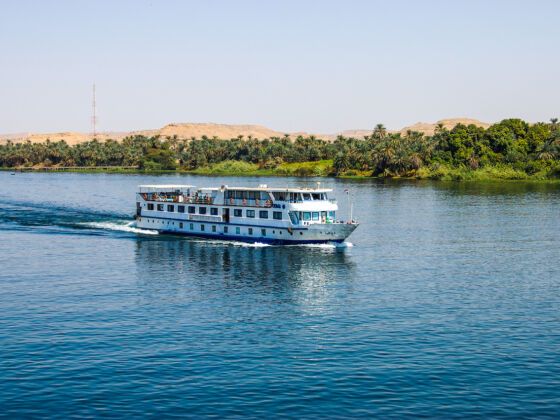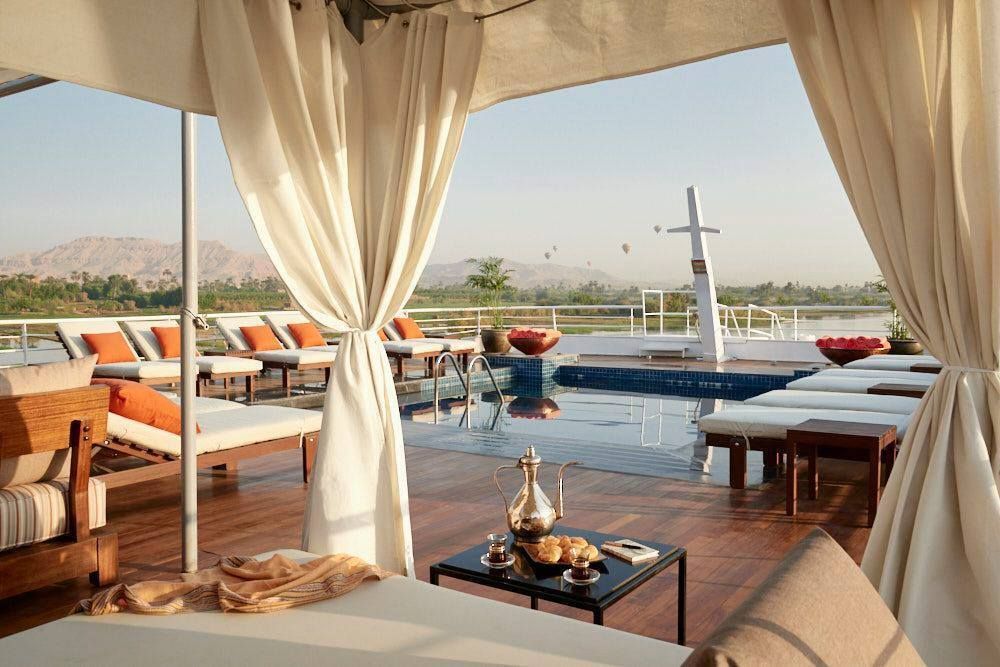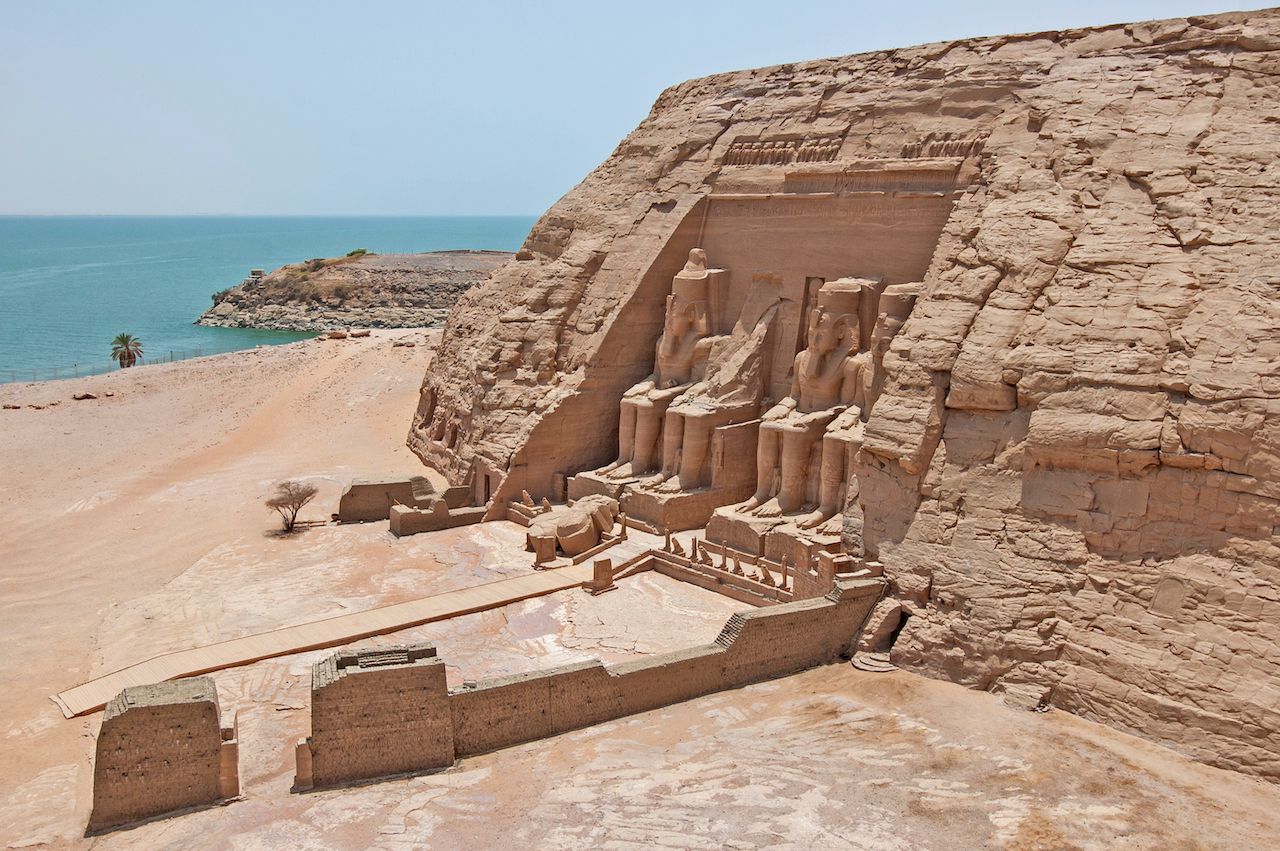Until the 19th century, the Nile was Egypt’s artery, transporting goods, effigies of gods, mummies, and people. But cruising the Nile for leisurely purposes was perhaps most famously endeavored in 47 BC, when Julius Caesar and Cleopatra VII, Egypt’s final and most illustrious queen, are said to have gone on a sightseeing tour up the Nile. Equally enamored with Cleopatra and the sumptuous riches of her kingdom, Caesar ensured that Egypt would remain sovereign for the rest of his tenure at the helm of the Roman Republic.
Today, over two thousand years after the sailing of the Nile by these historical characters, the tradition lives on. Cruising the Nile has become a highlight of any visit to Egypt, whether you’re a queen, a statesman, or just a regular tourist. This is, perhaps, because it’s the best way to see the country’s extant temples. Unlike ancient times, however, the modern spin on a Nile cruise can take many forms depending on your budget and interests.





